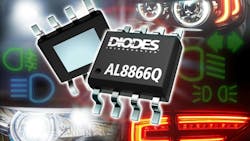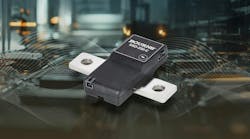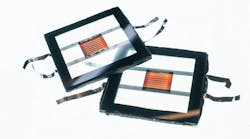Automotive-Compliant LED Driver Supports Multiple Topologies with Fault Reporting
The AL8866Q, an automotive-compliant LED driver from Diodes Inc., is designed to drive an external MOSFET. The DC-switching LED driver-controller supports buck, boost, buck-boost, and SEPIC topologies for high-power LED lighting systems. Applications include daytime running lights (DRL), high/low beams, fog lights, turn lights, brake/stop lights, and more.
Built with a fixed-frequency (400 kHz) peak current-mode control architecture, the AL8866Q can operate across a wide input voltage range from 4.7 to 85 V, covering the common 12-, 24-, and 48-V battery power rails. It incorporates a spread-spectrum frequency-modulation technique to enhance EMI performance, which is compliant with the most stringent CISPR 25 Class 5 standard.
The device supports analog and pulse-width-modulation (PWM) dimming of the LED current via its DIM pin and maintains a 1% reference tolerance, enabling better brightness control and matching between lamps. With an over 100:1 analog dimming range, it achieves ±12% output current accuracy at low (20%) analog dimming levels, making it more precise than similar LED drivers available. Alternatively, PWM dimming (0.1 to 1kHz) achieves a 100:1 dynamic range.
A soft-start function gradually increases the inductor and switch current to minimize potential overvoltage and overcurrent at the output. And an open-drain fault output indicates fault conditions such as LED output overvoltage, LED output-open/-short, cycle-by-cycle overcurrent protection, sense-resistor and shorted-inductor/-diode detection, diode-open circuit, and thermal shutdown.
The AL8866Q comes in SO-8EP and U-DFN3030-10 packages, with an operating temperature range of −40 to +125°C, and is priced at $0.50 and $0.48 in 1,000-piece quantities, respectively. A standard compliance version, the AL8866, is also available; it’s targeted at industrial and commercial applications.
Next in This Issue of PowerBites
About the Author
Lee Goldberg
Contributing Editor
Lee Goldberg is a self-identified “Recovering Engineer,” Maker/Hacker, Green-Tech Maven, Aviator, Gadfly, and Geek Dad. He spent the first 18 years of his career helping design microprocessors, embedded systems, renewable energy applications, and the occasional interplanetary spacecraft. After trading his ‘scope and soldering iron for a keyboard and a second career as a tech journalist, he’s spent the next two decades at several print and online engineering publications.
Lee’s current focus is power electronics, especially the technologies involved with energy efficiency, energy management, and renewable energy. This dovetails with his coverage of sustainable technologies and various environmental and social issues within the engineering community that he began in 1996. Lee also covers 3D printers, open-source hardware, and other Maker/Hacker technologies.
Lee holds a BSEE in Electrical Engineering from Thomas Edison College, and participated in a colloquium on technology, society, and the environment at Goddard College’s Institute for Social Ecology. His book, “Green Electronics/Green Bottom Line - A Commonsense Guide To Environmentally Responsible Engineering and Management,” was published by Newnes Press.
Lee, his wife Catherine, and his daughter Anwyn currently reside in the outskirts of Princeton N.J., where they masquerade as a typical suburban family.
Lee also writes the regular PowerBites series.





